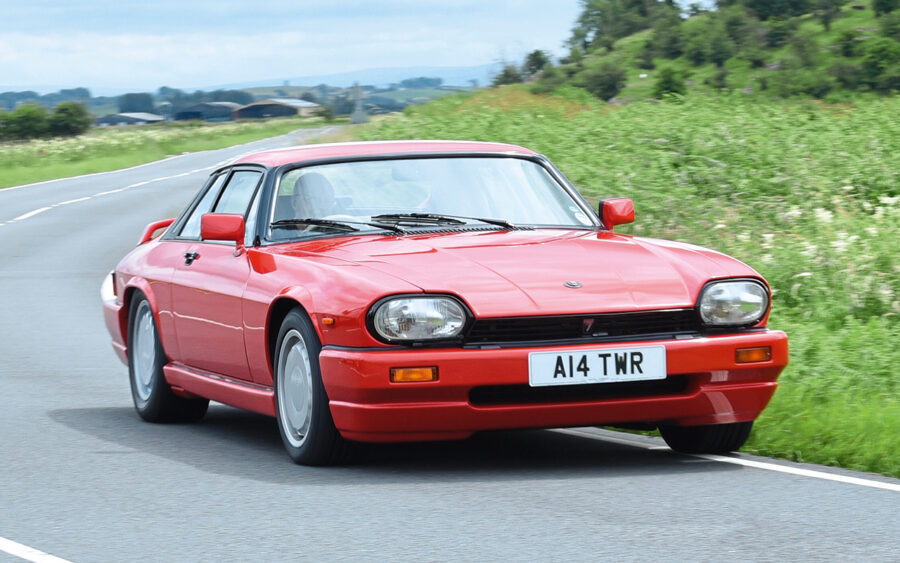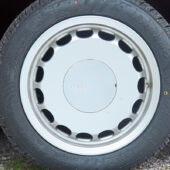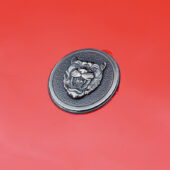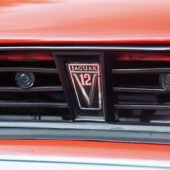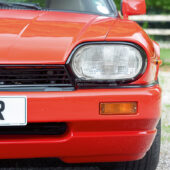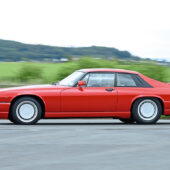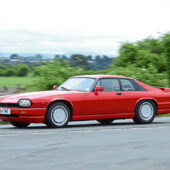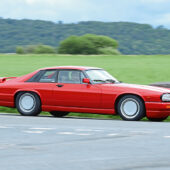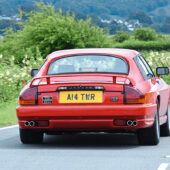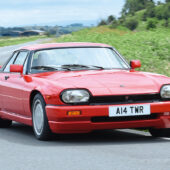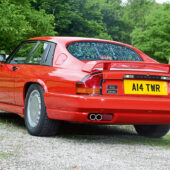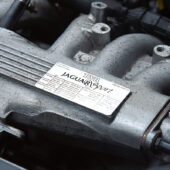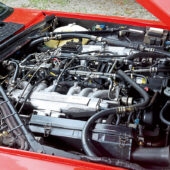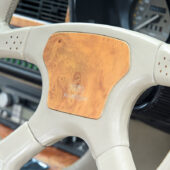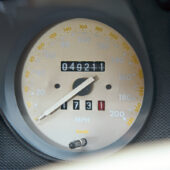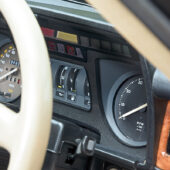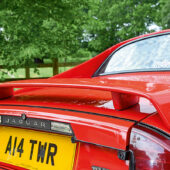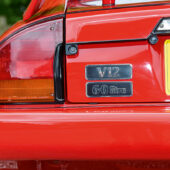We sample a 1987 JaguarSport XJ-S first owned by TWR’s Tom Walkinshaw and powered by a unique 6.4-litre V12
Words and images: Paul Walton
By all accounts, Tom Walkinshaw was a big man with an even bigger personality. You don’t win the European Touring Car Championship or facilitate Jaguar’s sixth and seventh Le Mans victories by being a shrinking violet.
As Jaguar’s former chairman, Sir John Egan, says about Walkinshaw in his 2015 biography, Saving Jaguar, “He was part tornado, part rugby front-row forward and part mystical leprechaun.”
Clearly such a man wouldn’t drive an ordinary car and it seems even a standard XJ-S wasn’t quite powerful enough because in 1987 TWR built a unique 6.4-litre model for his personal use. Hard to miss with huge amounts of power, it was the perfect match for this larger-than-life character.
Born in Midlothian, Scotland, on 14 August 1946, Walkinshaw started racing when he was 22 with an MG Midget before changing up to a Lotus 61 single-seater. He quickly showed his talent by winning the 1970 Scottish FF1600 title in a Hawke, later moving to the works March team. The turning point came in 1974 when he was hired by Ford to drive a Capri in the British Touring Car Championship when he won his class.
Although the Ford contract gave him access to the Cosworth V6 for use in Formula 5000, from the mid-70s onwards he concentrated on touring cars, joining forces with BMW in 1976 for the World Championship of Makes driving a CSL and winning the Silverstone Six Hours.
He could have stayed as a works driver but with an eye on the future he started Tom Walkinshaw Racing in 1976 to develop, build and race touring cars. Its first was a BMW 530i for the BTCC in 1977 when it gave the all-conquering Capri a stiff challenge.
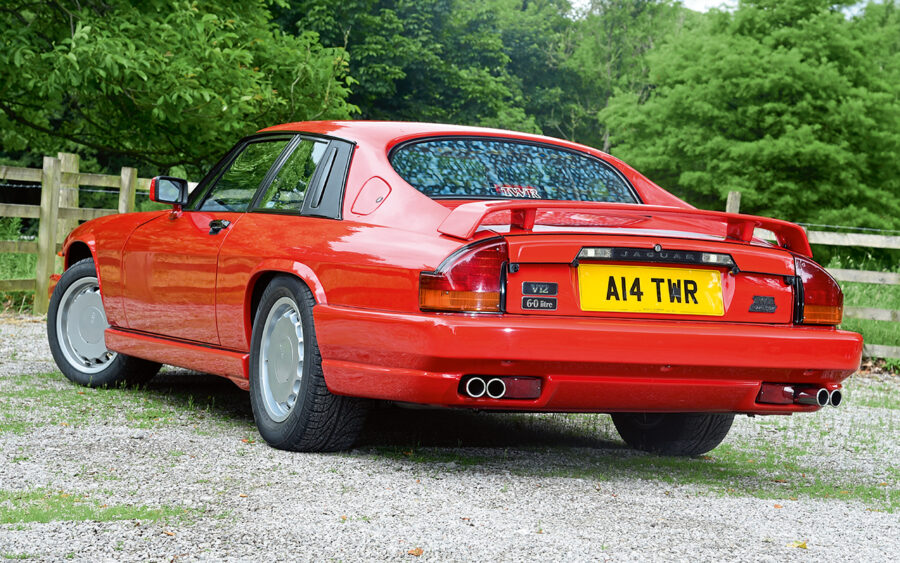
Walkinshaw soon added other manufacturers to TWR’s rostrum including Mazda, Audi and Rover. “He obviously had a master plan, but we never sat down and discussed where we were going,” said TWR’s first employee, Eddie Hinckley, during a 2011 interview. “It just seemed to roll along at a rapid rate! Obviously he was a great motivator, but it was hard work because there weren’t many of us initially. He was certainly very dynamic.”
Yet TWR is arguably best known for its long and extremely successful partnership with Jaguar which began in the early 80s. Since the V12-engined XJ-S had a better power-to-weight ratio than a BMW 635, Walkinshaw reckoned it would be competitive in the European Touring Car Championship and in 1981 the Scot headed to Browns Lane. “He took his time explaining his case,” continued Egan in Saving Jaguar, “and told me that by some strange magic known only to him, we could, admittedly at great cost, make our V12 XJ-S win the European Touring car Championship, with him as chief driver.”
Despite initially limited support from Jaguar, by the end of the 1982 TWR had turned the XJ-S into a winner. With sponsorship now flowing from Browns Lane, Walkinshaw was as good as his word and in 1984 won the driver’s championship before hanging up his helmet. Even greater success awaited TWR when, after entering the series with Jaguar in 1985, it won the World Sportscar Championship three times in 1987, 1988 and 1991.
Always a canny operator, at the end of the 1984 season Walkinshaw cashed in his ETCC success by TWR developing a series of racing inspired upgrades for Jaguar’s range although they were usually more popular for the XJ-S.
Sold under the JaguarSport name and available for the V12 and straight six, coupe and cabriolet, these modifications included a GRP colour-coded body kit that was said to offer a 12.7 percent improvement in drag plus distinctive 16in Speedline alloys shod with Goodyear NCT Eagle tyres. There were also new seat covers plus a leather-trimmed four-spoke steering wheel.
Mechanically, the JaguarSport XJ-S received a full flow exhaust which resulted in a ten percent power increase. The power steering was recalibrated for more feel while beefed-up vented discs plus stiff shock absorbers that were especially designed for the car by Bilstein improved handling. There was also the expensive option of a TWR-developed 6.0-litre V12 plus a ‘quick shift’ three-speed automatic transmission or five-speed manual.
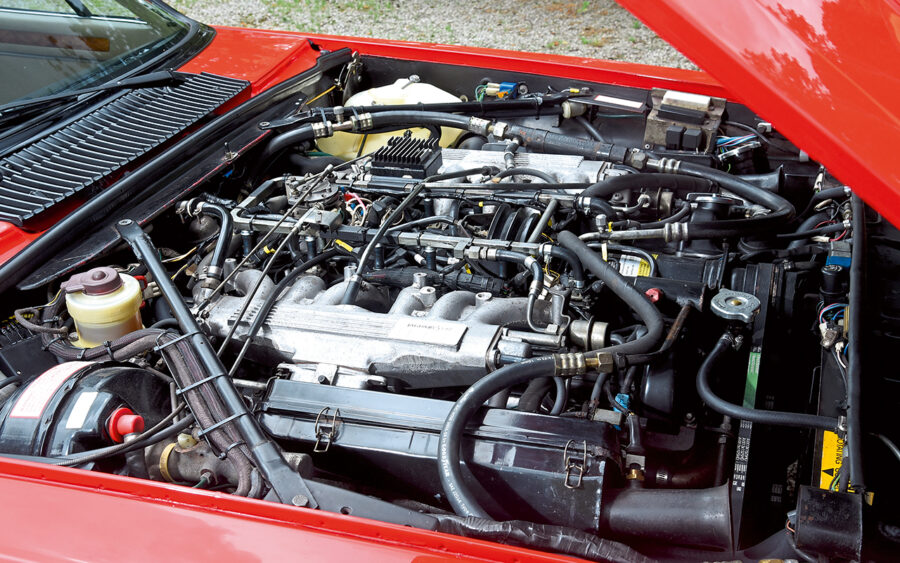
These changes had a huge effect on the car’s character, transforming the XJ-S into a harder sports car but without losing its grand tourer origins. “Wheeling the TWR Jaguar XJ-S out into a narrow road is as easy as driving the family sedan – it’s that docile,” said Road & Track in August 1985. “The five-speed is smooth, and the shifts are easy and the modified V12 just purrs along. Hit the open stretch of clear road and nail the throttle – the Jaguar takes off like a scalded cat, covering distance with incredible speed, with barely a ripple to upset the occupants.”
Cars were transported to TWR’s premises in Kidlington near Oxford to be transformed and in 1987 it built a special car for the boss. Starting life as an XJ-S V12 coupe (chassis number SAJ-JNAEW3BA141954) in Bordeaux Red Metallic and supplied by Jaguar’s dealer in Perth, as well as the usual JaguarSport upgrades including the body kit and stiffer suspension, it was also fitted with a 6.4-litre V12 (no.8S051861HA) plus TWR’s quick shift three-speed auto.
This wasn’t the first time TWR had upgraded the 5.3 V12 to 6.4 litres: it converted its first (8S43631HA) in 1986 which was initially used as the company’s demonstrator. However, during a test on a rolling road incorrect fueling caused one of the pistons to melt, seizing the engine. The V12 was removed from the car and pushed into the corner of the workshop.
It’s not known why TWR was working on a 6.4-litre V12. Was it just experimental or was the company going to offer it as an even more expensive option than the existing 6.0-litre?
According to a letter from the then head of TWR’s road car development, Anthony Moss, sent to the current owner, the conversion of a 5.3-litre V12 to 6.4 litres for Walkinshaw’s car started on June 3 and was tested on the dyno five days later. The engine was fitted to the car on 9 July, which was registered a day later as TOM 2, Walkinshaw’s own number which appeared on many of his vehicles.
Later the same year, Walkinshaw asked for the XJ-S to be repainted in what’s said to be his favourite colour, Ferrari red, so it was sent to the same paint shop TWR used for its racing cars.

Maybe it’s because the XJ-S had been transferred from TWR to Jaguar Sport Ltd in May 1988 when it’s thought the car became a demonstrator (when it was reregistered D659TFC) Walkinshaw requested the now bright red car be driven to Le Mans in June for the 24-hour race. With the task falling on TWR engineers Paul David and Clive Parker, they were told by Anthony Moss not to exceed 4500rpm since he hadn’t completed the fuelling map up to 6000rpm.
But following some ‘enthusiastic’ driving on the way home from France – no doubt the result of Jaguar winning the race – the engine failed. The pair discovered one of the cylinders on B bank was the issue, so David and Parker disconnected the injector and spark plug allowing them to drive slowly back to TWR’s Kidlington headquarters.
Since the first 6.4 from 1986 was considered to be less damaged than the engine currently in the red XJ-S, it was chosen to be rebuilt. “We determined which parts needed replacing,” said Moss, “and took these from 8S51861HA to repair the [first] 6.4-litre engine.” Moss goes on to say the original Lucas fuel injection was replaced with the same Zytek system as TWR’s racing cars since the British company was keen to try it on an XJ-S road car.
The car was retained by JaguarSport until September 1989 when it was bought by an audio electrics company in Essex who owned it until 1993 when it was sold for £14,000 via TWR to a new owner in Kent. The XJ-S was then bought by an owner in Surrey in 1999 who three years later had the now tired car fully restored by Southern Classics.
Due to ill health, the owner put the finished XJ-S into storage where it stayed for a decade and half until he sold it. The next keeper only had the car for 18 months and in 2019 it was advertised as a 6.0-litre and Tom Walkinshaw’s former car which, although unconvinced of its provenance, still caught the attention of current owner, Bill Whiteside. “I didn’t fully believe the guy I bought it from,” he admits. “I thought he was just telling me a story.”
After he got the car home, Bill realised the engine number didn’t match the Heritage Certificate. “I thought, ‘Oh dear what I have bought?’” He later found a website that’s full of information about TWRs including a chart created by Anthony Moss showing all of TWR’s engine and chassis numbers. Bill quickly discovered the engine in his car was originally in a TWR demonstrator and that it was a 6.4.
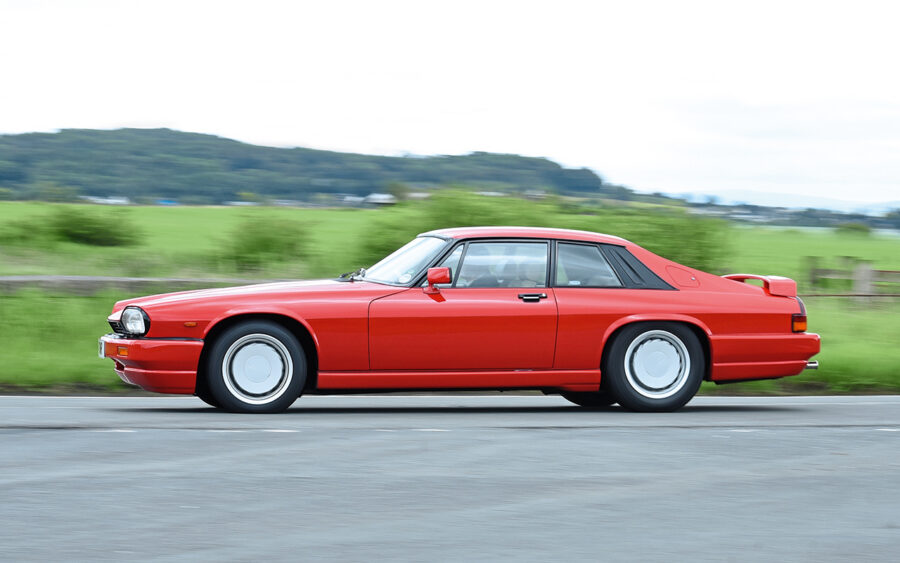
This was later confirmed when Bill contacted Moss directly. “I had an issue with the Zytek injection system,” he tells me. “Since Antony had helped other TWR owners in the past, I contacted him, and not only did he remember the car but verified the engine was a 6.4 and that it was used by Tom Walkinshaw.”
As the man behind Jaguar’s racing successes throughout the 80s as well as the Jaguar Sport brand, it makes Walkinshaw’s XJ-S an important car, up there with William Lyons’ personal cars. But while Jaguar’s former chairman wouldn’t have approved of the bright red XJ-S with its large engine, it was a perfect match for Walkinshaw who was renowned to be a fast driver, often tearing up the quiet roads around Kidlington.
Like all XJ-Ss, it oozes presence although the large front air dam and rear spoiler gives it just a little bit more. Other than the four-spoke TWR wheel with an awkward-looking piece of veneer in the centre, the interior appears largely standard. But on closer inspection, I notice the speedo goes all the way to 200mph rather than 160 as per standard models. The speedo face is also cream which as Bill confirms makes reading the white numbers tricky.
With him kindly offering me a drive, I climb in behind the wheel and get the same feeling as when I drove Lyons’ former XJ6; Walkinshaw sat in this very seat holding this very wheel and looking through this very screen. I wonder what he thought about as he thundered through the Cotswolds on his way to work. Probably that everyone should get out of his way.
After I twist the key in the ignition, the huge V12 churns slowly a couple of times before catching, settling down to a deeper hum than a standard V12. Both Bill and I are surprised that as a former racing driver, Walkinshaw didn’t specify the five-speed manual. But through the fast-acting quick shift transmission, the big V12 delivers its power much faster and more easily than even TWR’s 6.0-litre.
It’s not known how much power the 6.4-litre offers but clearly more than the 380bhp TWR’s own 6.0-litre is said to have produced. Free-revving and always eager, it makes Walkinshaw’s car the hardest and most performance-orientated XJ-S I’ve driven.
Thankfully the uprated suspension can handle the extra power and due to the limited body roll together with plenty of grip from the fat tyres, I’m able to accelerate hard out of a corner with the same confidence as a smaller, lighter, nimbler sports car. Yet the ride is still reasonably forgiving and rough road surfaces aren’t transmitted into the cabin.
Big, bold and brash, not only was Walkinshaw’s bright red XJ-S with its upgraded engine the perfect choice for this most charismatic of automotive leaders but it remains a testament to the company he created and the cars it built.

